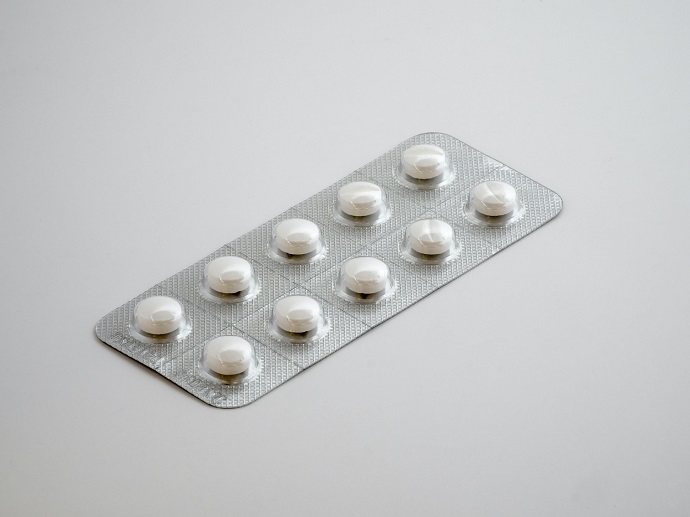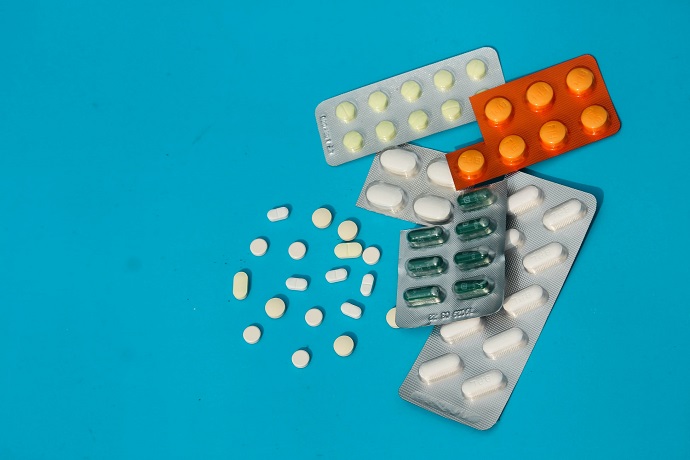Allergies occur when your body’s immune system reacts to a normally harmless substance, such as pollen, mould, bee venom, or certain foods that don’t cause any reactions in most people. Substances that cause this reaction in the human body are called allergens. Allergy symptoms can range from mild to life-threatening. The most common symptoms associated with allergic reactions are nasal congestions, sneezing, itchiness, runny nose, and watery /red eyes.
‘Hay fever’ also called ‘Allergic Rhinitis’ is the most common allergic reaction that is caused when coming in contact with an airborne substance such as pollen. According to a survey, nearly one in five Australians suffer from hay fever. That being said, finding the right allergy medication for relieving hay fever is crucial.
What Are Antihistamines?

Antihistamines are a group of medicines that are most commonly used in the treatment of allergy symptoms. These drugs treat symptoms caused by too much secretion of histamine, which is a chemical created by your body’s immune system. The excessive release of histamine is responsible for triggering all those troublesome symptoms such as itching, swelling, and a runny nose.
Antihistamines are most commonly used in people who have an allergic reaction to pollen and other allergens. They act by blocking the action of either H1 or H2 receptors in the human body. Antihistamines can be also used to treat a variety of other conditions such as stomach troubles, colds, nausea, and vomiting.
Types of Antihistamine

Antihistamines medications are divided into two main subtypes:
- Antihistamines that make you feel sleepy including chlorphenamine, hydroxyzine, and promethazine;
- Non-drowsy antihistamines, which are less likely to cause symptoms of sleepiness such as cetirizine, fexofenadine, and loratadine.
The first subtype called the H-1 receptor antagonist produces histamine blockage at H-1 receptors in the central nervous system and is most commonly used to treat allergy symptoms.
The second subtype Called the H-2 receptor acts by binding to histamine type 2 receptors or H-2 blockers. This one treats conditions such as gastrointestinal conditions, including gastroesophageal reflux disease (GERD), peptic ulcers, gastric, nausea, and vomiting.
How to Buy Antihistamine Tablets Online

If you think that you are developing symptoms that may suggest you are having an allergic reaction, consult your doctor who can prescribe you the right antihistamine medications for your condition. These medications are available in different forms including tablets, liquids, capsules, syrups, creams, lotions, eye drops, and nasal sprays.
There are hundreds of websites selling prescription medicine online. Most of them are legal companies that offer genuine privacy and convenience. More and more consumers are choosing to buy antihistamine online, as it’s convenient and private and it can be done with just a few clicks.
However, you should be wary whether these drugs are FDA approved as there are many buying sites that may put your health at risk. Buying your antihistamine online should be done carefully – make sure to read everything about the medication, its appropriate usage, and reviews by other customers who ordered it for the same condition.
Most Common Antihistamine Drugs

If you’re suffering from hayfever you are probably familiar with how it can impact your day-to-day life. Take a look at the most popular medicines to treat this condition.
Claratayne Hayfever
Claratayne Hayfever is an antihistamine non-drowsy drug that will give you immediate rapid 24-hour relief from the symptoms of hayfever. You can choose to buy this antihistamine medication online or in your local pharmacies by giving your prescription document to the pharmacist.
Telfast
Another common antihistamine drug for treating allergies is Telfast. Telfast is a non-sedating antihistamine which means it has been shown to cause less drowsiness. It contains an active ingredient called fexofenadine hydrochloride which helps in alleviating allergy symptoms by preventing the effects of a substance called histamine, which the body produces when exposed to certain substances.
Loratidine
Loratidine is another antihistamine medication most commonly used to relieve certain allergic reactions that may cause rashes, runny nose, watery eyes, and itching. This drug is less likely to call sleepiness and is available in tablets or liquid form. Loratidine medication isn’t suitable for people who have certain medical conditions such as liver failure, epilepsy or have an intolerance for sugars such as lactose or sucrose.
What’s the Difference Between First and Second-Generation Antihistamine?

There are some significant differences between the first and second generations of antihistamines. The first-generation antihistamines block both histaminic and muscarinic receptors and do not pass the blood-brain barrier. These medications reduce sneezing, rhinorrhea, nasal mucus weight, and in some instances cough and cold. They can cause significant drowsiness as they have a sedative effect.
Contrary to them, the second generations antihistamines mainly block histaminic receptors and do not pass the blood-brain barrier. They also have less sedating effects and cause less drowsiness. However, anyone taking these meds while performing skilled tasks such as driving, should be cautious and read carefully the instructions as the possibility of sleepiness and other side effects aren’t totally excluded.
Administration
These medications are generally administered orally in a form of tablets. However, intravenous and intramuscular administration is also possible, reserved mostly for patients with specific conditions.
Side Effects and Risks of Antihistamines

As with any medication, antihistamines medications can cause many health risks and side effects. Therefore, discussing your condition with a healthcare provider and deciding together which antihistamine medications may suit best your individual health condition is of utmost importance.
The benefits should be able to outweigh the potential side effect these drugs can provide.
Some of the risks and side effects associated with taking these medications can vary depending on which type of antihistamines you take.
Sedating antihistamines can cause many short-term side effects such as sleepiness, extreme tiredness, dry mouth, increased appetite, blurred or double vision, difficulty urinating, and low blood pressure. However, most of the symptoms are mild and disappear the moment the drug is no longer used.
One study has even reported that the long-term administration of these drugs can increase the risk of gliomas, a common type of brain tumour in patients who are taking these medications. Non-sedating antihistamines are used for treating conditions such as hay fever, eczema sinusitis, and chronic urticaria. Some of the side effects associates with them are headache, nausea and vomiting, constipation, accelerated heart rate, and abdominal pain and discomfort.
Can Pregnant Women Take Antihistamine Medications?

Many allergy drugs can be freely taken during pregnancy, however, it’s best to consult with your doctor first. Even though It is most advisable to skip using them altogether during pregnancy, if your allergy is giving you a hard time, such as sleep disturbance and difficulty breathing, it may be better to take the medication prescribed by your doctor.



















